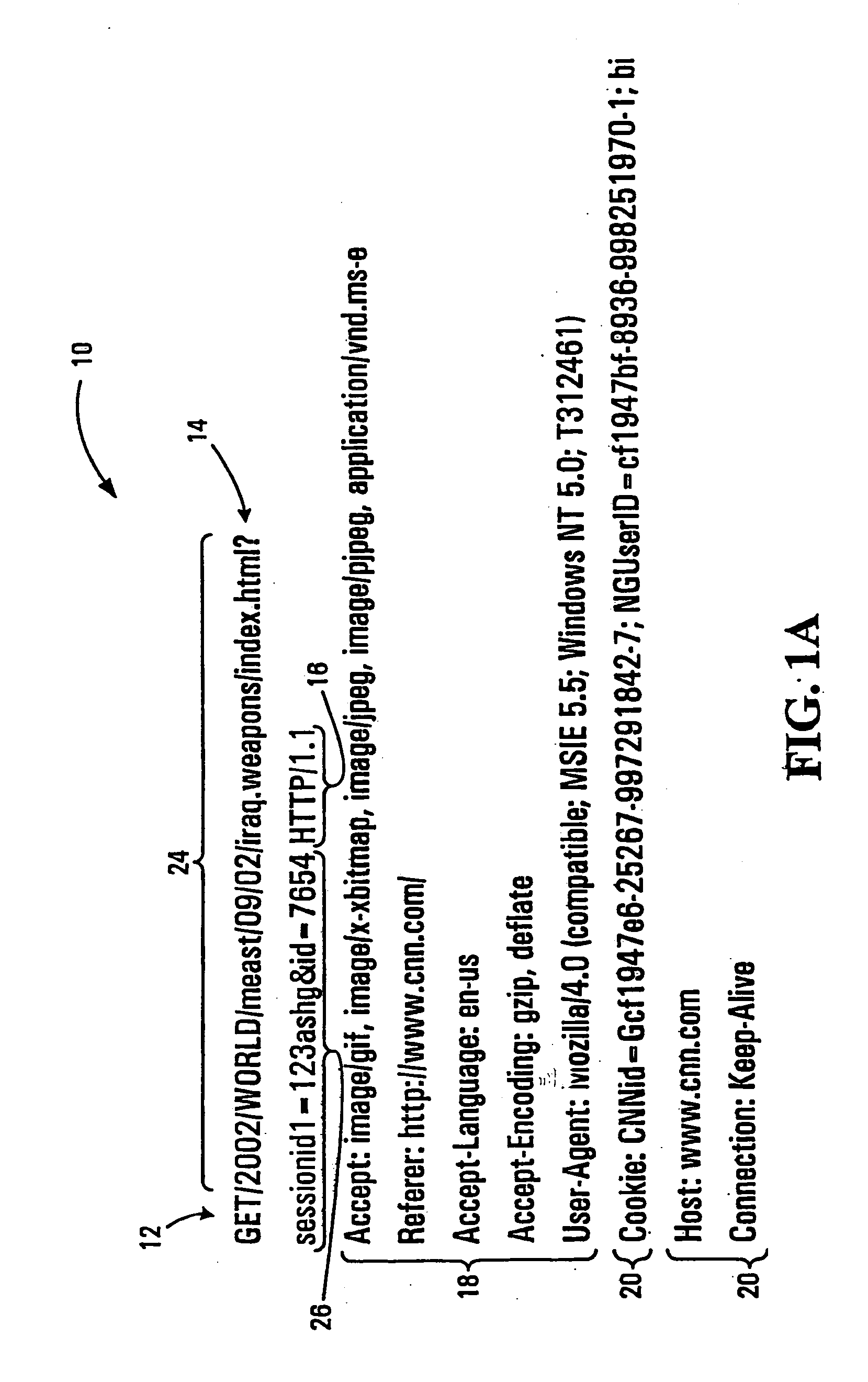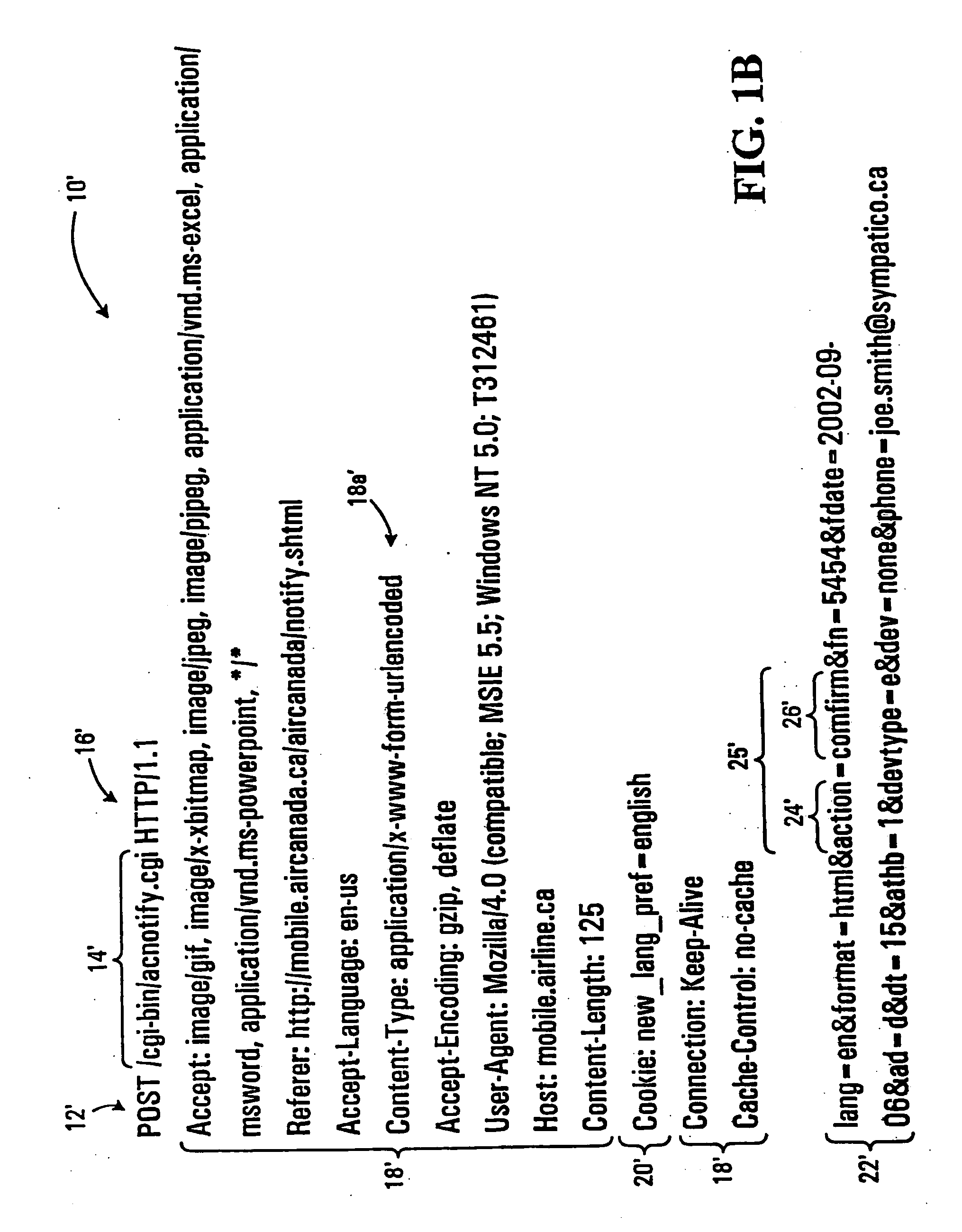Rule creation for computer application screening; application error testing
a technology for computer applications and rules, applied in multi-programming arrangements, instruments, data switching networks, etc., can solve problems such as unauthorised access to proprietary information, unauthorised attempts to alter information, and illegitimate requests to computer applications
- Summary
- Abstract
- Description
- Claims
- Application Information
AI Technical Summary
Benefits of technology
Problems solved by technology
Method used
Image
Examples
Embodiment Construction
[0020] Packets transmitted across the Internet comprise a top level link layer, a mid-level network layer, a lower level transport layer, and a low level application layer. Each of the higher layers is, in essence, a packet. Thus, the link layer is a packet with a header and data that comprises a network layer packet and the network layer packet has a header and data that comprises a transport layer packet. The header of the link layer almost invariably indicates that the protocol followed by the packet is the Internet Protocol (IP) (older protocols being now substantially obsolete and / or not in use on the Internet). Where the packet is an IP packet, the network layer is known as an IP datagram. The header of the transport layer will indicate the transport protocol, the Transport Control Protocol (TCP) of the IP being by far the most common transport protocol as it is used for web browsing, e-mail, and web services. (As will be appreciated by those skilled in the art, web services a...
PUM
 Login to View More
Login to View More Abstract
Description
Claims
Application Information
 Login to View More
Login to View More - R&D
- Intellectual Property
- Life Sciences
- Materials
- Tech Scout
- Unparalleled Data Quality
- Higher Quality Content
- 60% Fewer Hallucinations
Browse by: Latest US Patents, China's latest patents, Technical Efficacy Thesaurus, Application Domain, Technology Topic, Popular Technical Reports.
© 2025 PatSnap. All rights reserved.Legal|Privacy policy|Modern Slavery Act Transparency Statement|Sitemap|About US| Contact US: help@patsnap.com



